MRCO BLOG
Medical Musings, Health Hypotheses & Therapeutic Thoughts
Common Cricket Injuries, What Are They & What Can You Do?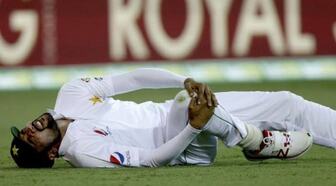 The long periods of gameplay, combined with explosive sprinting, jumping, throwing etc. puts a lot of sudden forces on the soft tissues (muscles, tendons, ligaments and the like; as opposed to hard tissues like bone) of the body. Because of the heavy emphasis on running and throwing, the limbs are commonly affected, but side strains of the abdominal muscles are also very common.  Hamstring strain is the most common cricketing injury, affecting all cricketers regardless of position, and accounting for around fifteen percent of all cricket injuries, although most strains are grade I (mild, overstretching without tearing) or II (moderate, partial tear in muscle). As with side-strain (below), hamstring occur on the non-bowling side [1]. Overall, muscle injuries account for over forty percent of all cricketing injuries in a study of South African cricketers [2]. Appropriately warming up before training or play is crucial. The name is not coincidental, when you increase muscular temperature by a degree or two, you increase its extensibility (stretchiness, essentially), as well as increase blood flow to the involved muscles. You also increase very cool complicated-sounding things like adenosine triphosphate turnover, muscle cross-bridge cycling rate, and oxygen uptake kinetics [3]; which even without being a sports scientist, you might think sound very like they affect exercise performance (you’d be right). So warm-up is critical. The current evidence seems to indicate that (contrary to the previous batch of advice) stretching does not decrease power if performed before activity; but really, do anything as long as it gets your heart-rate up a little and warms up the muscles you are about to use [4]. 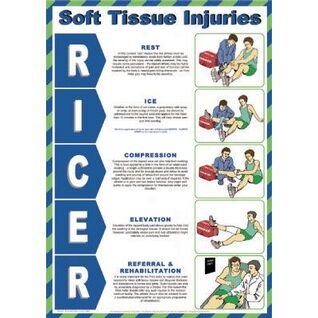 If you do ‘do a hammie’, apply the RICER first aid protocol: Rest (pretty self-explanatory) Ice (do not put anything cold in direct contact with the skin, wrap it something first) Compression (make sure any compression bandage is not so tight as to restrict circulation) Elevation (will help reduce swelling, and is also a good excuse for more ‘R’) Referral (e.g. to your osteopath or team physio, if you have one) Unless particularly severe (or re-aggravated by attempting to return to play too early, for example), most hamstring injuries should be fully resolved within six weeks. Side strain, as mentioned, is also common. You use your abdominal muscles a lot more than you might think, and we’re not talking about the six-pack, which really just helps to bend your spine forwards and sell men’s magazines. The abdominals generate a lot of the torque required to throw with force, as well as helping to stabilise your low back and pelvis. This means that pace bowlers are particularly prone to it. If you happen to throw the javelin as well, be careful of this area! 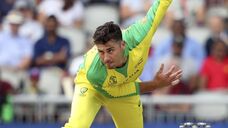 It is normally the non-bowling arm side that gets injured, due to the action of pulling the arm and torso down to generate the speed of the throwing arm. This sudden force tears the internal oblique muscle from the under surface of one of the lower ribs or costal cartilages. As you might imagine, you need to stop bowling (and playing in general, but particularly bowling!) immediately. Ice (if available) can also be helpful, applied to the site of the pain. Compression may not be helpful, and elevation is tricky! So move straight to the ‘referral’ part of your RICER first aid plan. You will probably need between four to six weeks of rehabilitation before you return to playing. 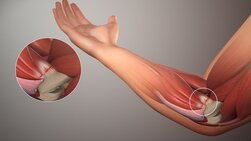 Thrower’s/Golfer’s elbow is known medically as medial epicondylitis. It is an overuse injury of the common flexor origin, where most of the muscles that flex (bend) your wrist and fingers attach on the inside of the elbow [5]. It either tends to occur right at the beginning of training/the season due to a sudden increase in workload for the area, or at the end (due to fatigue and overuse). Good throwing technique is a strong protective factor against this, and likewise, poor technique is asking for trouble; so pay attention to your form. In the case of a sudden onset at the beginning of the season, ice the area and get it assessed. You may just need to wear a brace for a few games, or you may be advised to give it the requisite time for healing. Stretching and strengthening the muscles of the forearm can also help prevent these sorts of issues, so don’t wait until they occur to take action – ask your osteopath for an exercise program today!  Rotator cuff injuries The rotator cuff is a group of small but important muscles surrounding the shoulder (hence the name). They are small muscles with a big job, and when they aren’t doing it very well, we notice! Rotator cuff injuries may come on gradually, as an overuse injury; or suddenly, like falling onto your outstretched arm and partly or completely tearing one of them. More commonly, there is an element of both – some deterioration and degeneration over a period of time, with a precipitating incident/trauma that sets off the pain and dysfunction. Rotator cuff injuries are often closely associated with shoulder impingement syndrome, and bursitis in the shoulder. Until the inflammation has been settled down, you will have a lot of difficulty performing any throwing or bowling movements, as well as reaching up above your head (e.g. catching). Regardless of whether it is a repetitive overuse injury, one following trauma (or, more commonly, a bit of both), you will need to strengthen the muscles and tendons as part of your rehabilitation.  Ankle sprain refers to injured ligaments and other soft tissues around the ankle joint. The most common type is rolling the ankle outwards, which strains the lateral collateral ligament between the lateral malleolus (the knobbly bit on the outside of the ankle, bottom of the fibula bone in the leg) and the bones of the foot. You do have to keep off an ankle injury and stop training and competing; for how long depends on the severity. If you have a grade 3 tear (you may have heard a ‘pop’ as the ankle went over), it will likely be two to three months or more before it is fully healed, and it is recommended to continue to wear an ankle brace for another three months after any serious ankle injury.  Patellar tendinopathy is injury or inflammation of the tendon that attaches your kneecap to the shin. It will be worse with bending and straightening the knee, especially under load. The sudden changes of direction in cricket with also aggravate this condition, and, as with many of these conditions, patellar tendinopathy occurs more often with bowlers. The extreme forces that go through the knee during the landing stride during bowling are horrifically and luckily-rarely demonstrated in the case of David Lawrence, whose patella (kneecap) shattered during a delivery in New Zealand in 1992 [6]. Depending on the severity and nature of the presentation (hopefully nothing like David’s!), you may need to stop playing and training for a short period to help get your body back on track. We will do everything we can to help keep you playing, if possible.  Low back pain consequent to muscle strain This is often closely related to the abdominal side-strain discussed above, and likewise is often caused by the control of rotation/torque through the trunk while throwing. You may also get low back pain caused by standing around and not moving enough, especially while fielding, so sometimes it’s “damned if you do, damned if you don’t”! Of course, the trick is moving the right amount.  Calf muscle strain Similar to the hamstring strains, muscle strains in the calf are made more likely by sudden changes in direction or speed, and jumping. Your osteopath will assess the likely severity of any injury, which can range from mildly straining a few fibres to fully rupturing a muscle (generally, if you do this, you will likely know about it, or at least that something is ‘not quite right’. Seeking prompt medical attention in that case, rather than waiting to see your osteopath, is strongly advised). You can then be given a timeframe for likely healing, a graded return to exercise and play program, and treated appropriately. 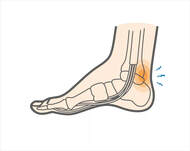 Achilles tendinopathy is injury or inflammation of the Achilles tendon that attaches to the back of the heel. It may often be associated with plantar fasciitis, as both are heavily impacted by ankle and foot mechanics, and are associated with tight calf muscles. Posterior ankle impingement is also a common problem in cricketers. This term comprises a variety of conditions including inflammation of the tendons and sheaths of other foot and ankle muscles, loose bodies inside the ankle joint, or inflammation of the capsule surrounding the joint. You may only have pain during bowling on the back foot due to the forced bending up at the ankle during front-foot landing, so not feel anything while running normally [7]. Footnotes and References[1] Pardiwala, D. N., Rao, N. N., & Varshney, A. V. "Injuries in Cricket" Sports health 2018, 10(3), 217–222. [2] Stretch RA "Cricket injuries: a longitudinal study of the nature of injuries to South African cricketers" British Journal of Sports Medicine 2003;37:250-253. [3] McGowan CJ, Pyne DB, Thompson KG, Rattray B "Warm-Up Strategies for Sport and Exercise: Mechanisms and Applications" Sports Med. 2015 Nov; 45(11):1523-46. [4] Park HK, Jung MK, Park E, et al. "The effect of warm-ups with stretching on the isokinetic moments of collegiate men" J Exerc Rehabil. 2018;14(1):78–82. Published 2018 Feb 26. doi:10.12965/jer.1835210.605 [5] Lateral epicondylitis is normally called Tennis Elbow, and affects the outside of the elbow. [6] Don’t feel that you need to look it up, the sound is horrible. For a happy ending to the story, although he failed to return to cricket, David is a moderately successful bodybuilder.
[7] Mansingh A ""Posterior ankle impingement in fast bowlers in cricket" West Indian Med J. 2011 Jan; 60(1):77-81
Drawers Louie
16/6/2023 01:23:59 am
I appreciate the emphasis on the significance of personal growth and mindset development when it comes to making money. It's a holistic approach to success. For more information, <a href="https://cdndn.com/srv.html?id=5530462&pub=2651150" target="_blank">click here</a>.
Reply
harry
2/7/2023 05:19:02 am
Are you a skilled proofreader? <a href="https://cdndn.com/srv.html?id=5530259&pub=2687932" target="_blank">click here</a> and explore opportunities to offer your proofreading services to authors, publishers, or businesses.
Reply
19/7/2023 01:08:52 pm
https://www.tablelandsphysio.com.au/blog/did-you-know-after-an-injury-it-is-common-to-have-some-loss-of-proprioceptiAwesome! Thank you for providing this important information. I heartily recommend visiting this website in order to learn more about a foot solution.
Reply
ADDY
23/10/2023 11:29:17 pm
Great work on your blog post! It was informative and insightful, and I liked how you supported your points with evidence. To delve deeper into this topic, <a href="https://CRICKET" target="_blank">click here</a>.
Reply
dibat
20/11/2023 04:31:23 am
Freelancers, streamline your client management. Click here "https://trendsnews1020.blogspot.com/2023/11/india-vs-australia-live-score-world-cup.html" for a client relationship tool that simplifies your life.
Reply
xyz
24/12/2023 05:42:14 am
Amazing. Explore more exciting things https://rb.gy/l6plgg
Reply
Leave a Reply. |
AuthorsDrs. Edmund Bruce-Gardner and Soraya Burrows are osteopaths Categories
All
|
|
Osteopathy at Moreland Road Clinic
High quality & personalised service from experienced professionals. A safe, effective & collaborative approach to patient care. All osteopaths undertake a 4-5 year university degree and are licensed and registered healthcare pracitioners. |
Find Us
Moreland Road Clinic 85 Moreland Road Coburg VIC 3058 P (03) 9384 0812 F (03) 9086 4194 osteopathy@morelandroadclinic.com.au |
Popular Blog Posts
|
|
|
Osteopathy at Moreland Road Clinic is on Moreland Road, near the corner of Nicholson Street/Holmes Street, on the border of Coburg, Brunswick & Thornbury.
This makes Osteopathy at Moreland Road Clinic the ideal location for people in the inner north and outer northern suburbs of Melbourne, including: Coburg, Coburg North, Coburg East, Brunswick, Brunswick East, Brunswick West, Fawkner, Oak Park, Glenroy, Preston, Pascoe Vale, Pascoe Vale South, Gowanbrae, Hadfield, Essendon, Moonee Ponds, Thornbury and Reservoir. |
9/10/2019
8 Comments